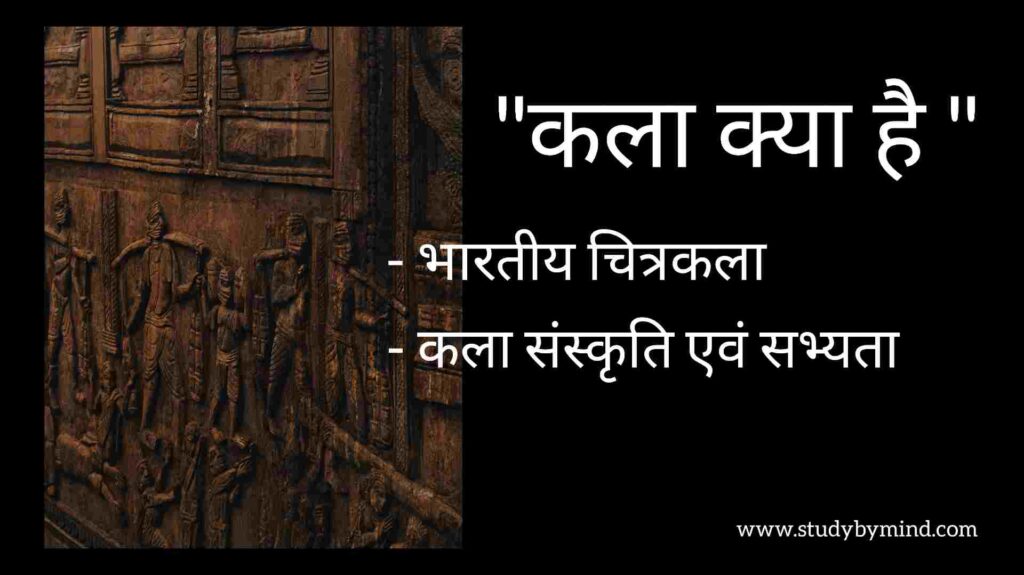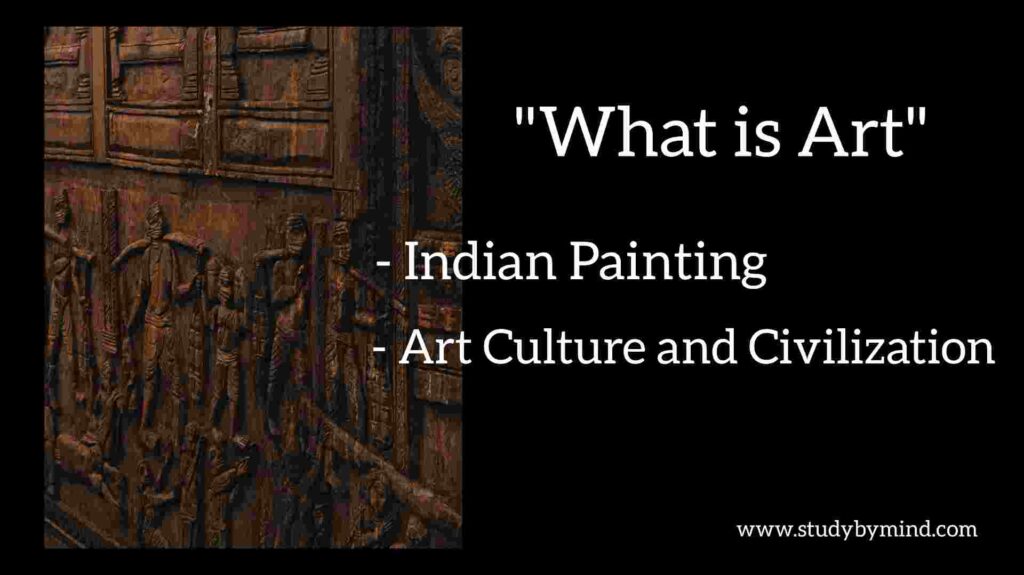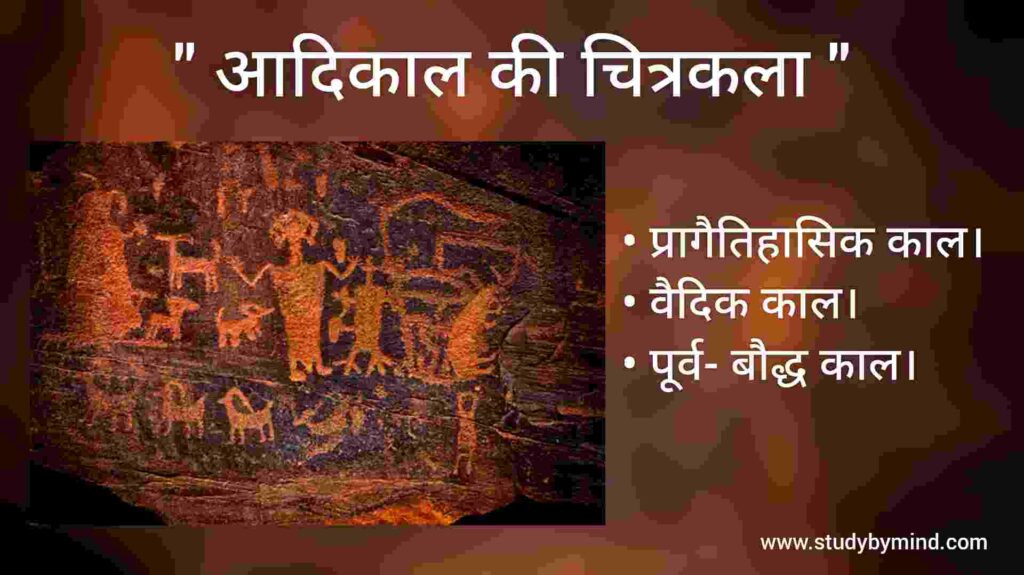Pre-Buddhist Period
Special development of painting in the pre-Buddhist period is not attested, Art and Civilization of the Pre-Buddhist Period= because Lord Buddha himself had exhorted his followers not to be inclined towards painting. Evidence of painting of this period is not available, and it is only from the Buddhist literature of this period that the knowledge of the practice of painting in the society is known.
पूर्व बौद्ध काल की कला तथा सभ्यता in hindi – “ Click here “
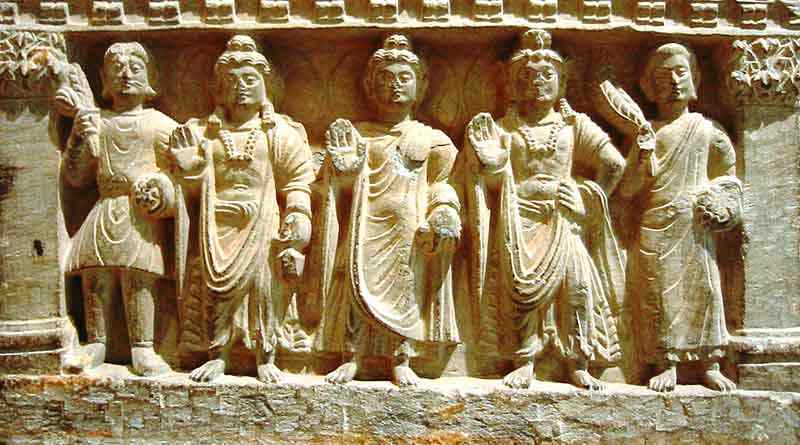
Painting is mentioned in Buddhist literature as
In addition to Jogimara, other rock-cut cave temples are believed to have been built, and may have been decorated with frescoes. But all of them must have been destroyed due to the climate in the excessive rainfall of India. At this time raw bricks and wood were used in the construction of buildings or houses. Due to which this building must have been destroyed soon. It is also estimated that the surface of the walls of these houses was plastered, and most of the walls were decorated with paintings. But there was no stability in the buildings of this time. Due to this reason, the remains of either of these two could not be found. From which one can get proper knowledge of painting. And it is inferred from the examples of the Jogimara cave painting of this time that it was in a similar developed form to the prehistoric stone age painting. And on the other hand, there are some such literary references, from which it is known that painting had developed a lot in India many centuries before Christ. To study the painting of this time, articles related to painting obtained from Vedic literature and ancient Buddhist literature have been seen. The mention of painting has come from place to place in the texts and epics of this time.
Pictograms
There is a beautiful legend traditionally prevalent in India regarding the birth of painting. Whose picture has been compiled in a treatise called Lakshna. This book has been published under the Tanjur Granthmala from Tibet. This book is available up to 3 chapters only. It seems clear from its study that, in this book, the story has been told in the invocation, that this book is a collection of the characteristics of painting specified by Vishwakarma and King Nagjit (King of Gandhara border province). It is known from the first chapter of this book that King Nagjit was a disciple of Vishwakarma. And when the king expressed his desire to take initiation in painting before Brahma, Brahma sent him to Vishwakarma. Vishwakarma trained him in painting and gave good education.
The Story of the Origin of Painting
The story of the origin of painting comes in the first chapter of this book – a Brahmin son suddenly dies in the kingdom of King Bhayjit during the entire period. Then the son in mourning went to the Brahmin king and he tortured the king, that if he is a Kshatriya and has faith in religion and Brahmin, then he should give life to his dead son. Hearing this, the righteous king becomes sad. He received Yamraj by the power of yoga, and pleaded to revive the dead Brahmin son. On accepting the prayer, the king fought with Yamraj and the king was defeated. In the end, Brahma himself appears and orders Bhayjeet to paint a picture of the dead son. In this picture, Brahma infused life and Brahma said to Bhayjeet that you have conquered the naked demons. So from today your name is Nakedjit. This creation of yours is the first picture of the universe. You will be considered the first master of this art in the world of death, and you will also be worshiped.
The elements of painting have been highlighted in a treatise called Chitralakshana. The proportions and the method of composition of different figures have been discussed a lot in this book.
Rigveda
In the Rigveda, there is a mention of a picture of the fire god made on leather. This picture was hung in front of the Yagya, and was wrapped at the end of the Yagya. In this Rigveda, the descendants of Bhrigu sages have been described as skilled in woodworking. In the Rigveda, there is also a mention of figures of women and goddesses built on the doors around the yagyashalas. These goddesses were symbols of dawn and night.
Mahabharata (600 BC to 500 BC)
In the Mahabharata, there is also a context of Satyavan painting a picture of a horse on the wall during childhood. There has also been an interesting description of the meeting of the Dharmaraja of India, Yudhishthira. In his building, a painting was painted on a wall, in which a true mysterious door was seen open. This unique building was built by Maysur.
Ramayana (600 BC to 500 BC)
In the Ramayana period, there was development of painting, architecture and architecture. With the description of Ayodhya in the sixth phase of Balkand, Mahamuni has mentioned about the decoration of letters on the clothes of women, palaces, chariots and animals, the high place and practical form of the prevailing art in the society. replacement takes place. Music, Vagh and pictures of Rama in Ramayana Knowledge of the means of entertainment etc. has been told. At the time of Ashwamedha Yagya, Rama had built a golden statue of his wife Sita. This statue was made by a craftsman named May. At the time of Ravana’s search of Sita in Lankapuri, Hanuman had got to see a painting gallery and a painted playground. The discussion of the painted building of Queen Kaikeyi also gives knowledge of art interest. The palanquins that were made for the bodies of Bali and Ravana were also painted. The Pushpak Vimana of Ravana is also said to be decorated with paintings. In this, paintings were done on the heads of elephants and the cupolas of beauties. The frescoes were also composed on the walls of Rama’s palace.
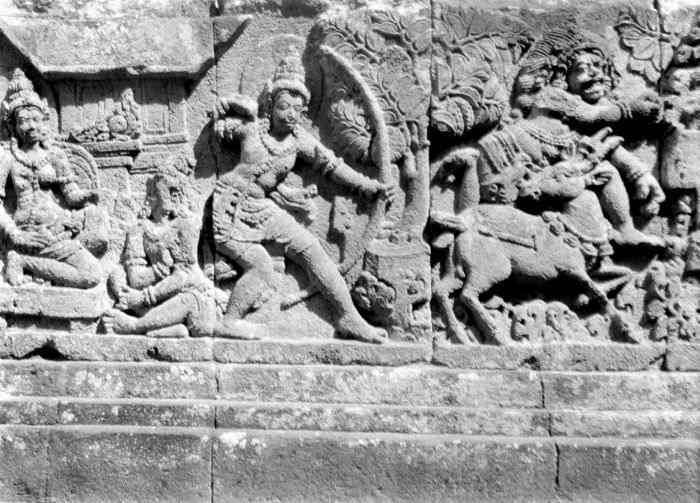
Six Parts of Painting
Rajapurohit Pandit Yashodhar of the assembly of Jaipur King Jai Singh I presented the commentary on ‘Kamasutra’ in the 11th century under the name ‘Jayamangala’. Commenting on the third chapter of the first tribunal of ‘Kamasutra’, Yashodhara referred to akhyakhya or craft (painting) has six parts which are as follows —
The Six Parts of Crafts
- differentiation – Knowledge of Vision
- proof – Precise proportions, sizes and textures
- Emotion – Drawings give the viewer the feeling of the artist’s heart
- lavyanyayojana – artistry and the incorporation of beauty
- appearance – uniformity of observed forms
- alpigmentation – artistry in the use of colors and paintbrushes < /li>
The observance of these 6 organs was considered necessary in ancient Indian art. These 6 parts of painting have been followed in the painting of Ajanta, Bagh etc. According to art principles, without proper display of these 6 organs, the picture remains lifeless. It is necessary to follow these 6 organs.
FAQ
Q. What is the period of Buddhist painting?
A. 600 BC to 500 BC.
Q. Origin of painting What is the story of?
A. Brahma himself appears and orders Bhayjeet to paint a picture of a dead son. In this picture Brahma infuses life and Brahma told Bhayjeet you You have conquered the naked demons. So from today your name is Nakedjit. This creation of yours is the first picture of the universe. You will be considered as the first master of this art in the world of death, and you will also be worshipped.
Q. When did Buddhist art develop?
A. 600 BC to 500 BC It is believed that other than Jogimara, cave temples may have been carved out of rocks, and perhaps decorated with murals, but due to the climate in India’s excessive rainfall, all of them were destroyed. would have happened.
Q. When is the beginning of sculpture in India considered?
A. At the time of Ashwamedha Yagya, Rama had built a golden statue of his wife Sita. This statue was made by a craftsman named Maya.
See also
- History of Buddhism in India – ” Click here “
- Vedic Period and Art – ” Click here “
- Prehistoric Period and Art – ” Click here “
